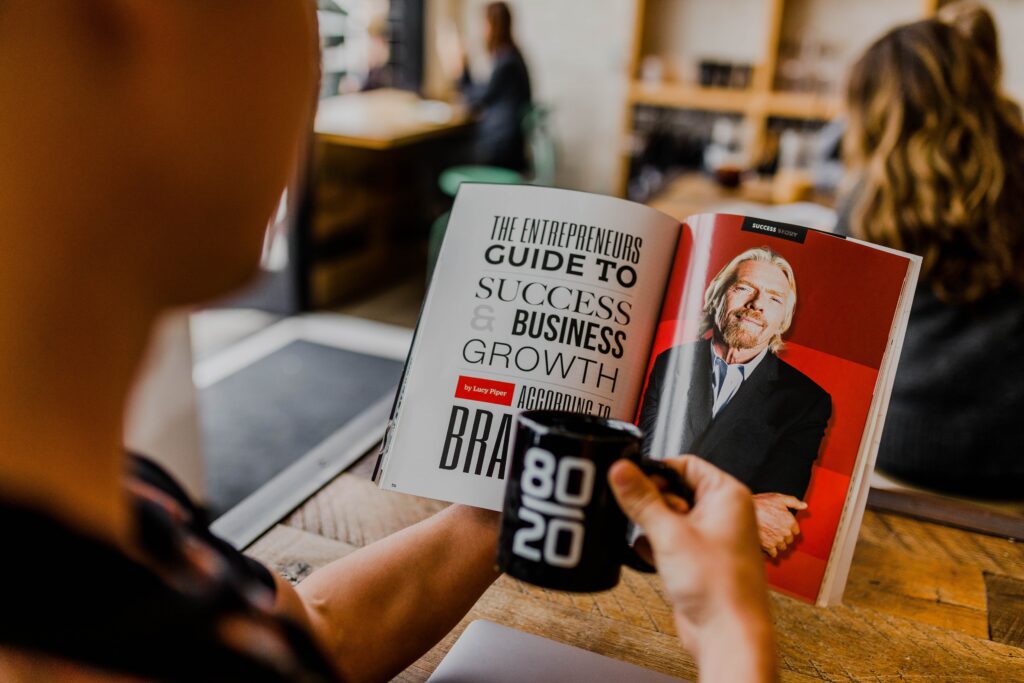|
| Element
| Insights
|
| 1 |
Call-to-Action (CTA) Buttons
Impact: Low
Difficulty: Beginner
Cost: Free-Affordable |
Call-to-Action (CTA) buttons serve as one of the most direct tools in steering user behavior on a website.
- Clarity is Key: The CTA button’s language should be clear, concise, and action-oriented. Terms like “Buy Now”, “Sign Up”, or “Learn More” immediately tell users what to expect upon clicking.
- Positioning Matters: Placing the CTA button strategically on the page ensures that users can easily find it when they’re ready to take action. Common areas include above the fold, at the end of content, or floating on the side.
- Color and Design: The button’s color and design should make it stand out but still fit within the website’s overall aesthetic. Contrasting colors often draw more attention.
- Size and Spacing: The button should be large enough to be noticeable and clickable, especially on mobile devices, but not so large that it overwhelms the rest of the content.
- Relevance and Context: The CTA should be contextually relevant to the content surrounding it. For instance, a product description page on an eCommerce site should have a “Buy Now” or “Add to Cart” button, while a SaaS feature page might have a “Start Free Trial” button.
|
| 2 |
Landing Pages
Impact: Large
Difficulty: Large
Cost: Affordable-Expensive |
A well-optimized landing page provides clear, compelling content and directs visitors toward a specific action, such as signing up or making a purchase.
- Clear Value Proposition: Ensure that the main value or benefit of the product or service is prominently and clearly communicated at the very beginning of the page.
- Singular Focus: Each landing page should have one primary call-to-action (CTA). Minimize distractions to ensure users are directed toward that singular goal.
- Visual Appeal: High-quality images, videos, and a clean design can enhance user engagement. Visuals should complement and reinforce the messaging.
- Trust Indicators: Incorporate testimonials, reviews, case studies, and security badges to build trust and credibility with the visitor.
- Fast Load Times: Even the best-designed landing page won’t convert if it doesn’t load quickly. Optimize images and scripts to ensure fast loading times, especially on mobile.
|
| 3 |
Forms
Impact: Medium
Difficulty: Medium
Cost: Affordable-Expensive |
Forms play a pivotal role in gathering vital information from users, facilitating processes like signups, feedback submission, and checkouts.
- Minimize Fields: Request only essential information. Each extra field can deter users. By simplifying the form, you reduce friction and increase the likelihood of completion.
- Dynamic Feedback: Provide real-time validation to users. For instance, if a password isn’t strong enough or an email format isn’t correct, instantly alert the user. This reduces errors and eases the form completion process.
- Mobile-First Design: Given the ubiquity of mobile browsing, it’s crucial that forms are responsive and optimized for mobile devices. Ensure touch targets are appropriately sized and spaced.
- Build Trust: For forms asking for personal or financial information, incorporate trust signals like SSL certificates, privacy notes, and security badges, assuring users their data is secure.
- Guidance and Clarity: Use clear labeling for each field, and consider adding tooltips or info icons for fields that might require additional explanation. Make sure error messages are instructive, guiding the user towards the correct action.
|
| 4 |
Product/Service Descriptions
Impact: Medium
Difficulty: Medium
Cost: Free-Affordable |
These descriptions act as online salespersons, providing all the necessary details and benefits of a product or service.
- Relevance & Clarity: Descriptions should be concise, informative, and tailored to your target audience. Users should quickly grasp the primary benefits and features of the product or service.
- Incorporate Benefits: Beyond just listing features, highlight the benefits a user would get from the product or service. This helps potential customers envision the value they would derive from it.
- Use of Visuals: Accompanying descriptions with high-quality images or videos can give users a better understanding of the product/service. Visual aids often improve engagement and can clarify features more than words alone.
- Address Potential Concerns: Proactively address common questions or objections users might have within the description. This might involve noting product dimensions, compatibility, usage scenarios, or return policies.
- Optimized for Search: Ensure your product/service descriptions are SEO-friendly. This not only helps in organic search rankings but also ensures that users find exactly what they’re looking for.
|
| 5 |
Testimonials and Reviews
Impact: Large
Difficulty: Beginner
Cost: Free-Affordable |
Testimonials and Reviews are powerful social proof tools that can build trust, dispel concerns, and positively influence buying decisions.
- Authenticity is Key: Genuine reviews resonate more with users. It’s okay if there are a few negative comments; they can make the positive ones appear more credible.
- Diverse Feedback: Showcase a variety of testimonials – from short, impactful ones to detailed feedback. Different customers resonate with different types of reviews.
- Visual Elements: Including photos or videos of reviewers (with their permission), or company logos for B2B testimonials, can significantly enhance trustworthiness.
- Highlight Benefits: Focus on testimonials that elucidate the benefits of your product/service, especially those that address common objections or concerns of potential buyers.
- Location Matters: While having a dedicated testimonial page is good, strategically placing reviews on product pages, landing pages, or during the checkout process can directly influence purchase decisions.
|
| 6 |
Pricing and Offers
Impact: Large
Difficulty: Medium
Cost: Affordable-Expensive |
Pricing and Offers can play a pivotal role in influencing purchase decisions. Their presentation, clarity, and perceived value are crucial for maximizing conversions.
- Perceived Value: The way you present pricing can influence how customers perceive the value of your product or service. For instance, showing a discounted price next to the original price can highlight the savings.
- Tiered Pricing: For SaaS or services, offering multiple pricing tiers caters to different segments of your audience, allowing them to choose a plan that best suits their needs.
- Limited-Time Offers: Creating a sense of urgency with limited-time deals can drive immediate conversions by leveraging the fear of missing out (FOMO).
- Bundling: Offer bundled products or services at a discounted price. Customers often perceive this as getting more value for their money.
- Transparency: Be upfront about all costs, including any additional fees or potential price hikes after promotional periods. Unexpected costs can deter customers at the point of conversion.
|
| 7 |
Site Speed
Impact: Large
Difficulty: Advanced
Cost: Affordable-Expensive |
Site Speed is an essential factor for user experience and search engine optimization. A delay in loading times can deter users from continuing their journey, leading to potential losses in conversions.
- User Experience: Faster loading times reduce bounce rates and improve user satisfaction, leading to a higher likelihood of conversions.
- SEO Benefits: Search engines, particularly Google, use site speed as a ranking factor. Faster websites can achieve better organic search rankings, driving more organic traffic to the site.
- Mobile Performance: A large proportion of users access websites via mobile devices. Ensuring optimized loading times for mobile is crucial as these users are often on the go and have less patience for slow-loading sites.
- Resource Limitations: Large images, unnecessary plugins, or unoptimized scripts can slow down your website. Regularly auditing and optimizing these can significantly improve load times.
- Perceived Performance: Sometimes, the perception of speed can be as impactful as actual speed. Techniques like lazy loading (where elements load only when they’re about to enter the viewport) can help users feel the site is loading quickly, even if some elements are still loading in the background.
|
| 8 |
Mobile Responsiveness
Impact: Large
Difficulty: Advanced
Cost: Affordable-Expensive |
A site optimized for mobile ensures users have an optimal experience regardless of their device, which directly impacts engagement and conversion rates.
- Enhanced User Experience: Mobile-optimized sites load faster and provide a user-friendly interface, making it easier for visitors to find what they’re looking for, thereby increasing the chances of conversion.
- SEO Benefits: Google emphasizes mobile-first indexing, meaning they prioritize the mobile version of your website for indexing and ranking. A responsive site can lead to better search engine rankings, driving more organic traffic.
- Increased Engagement: A site that displays well on mobile devices encourages users to stay longer, reducing bounce rates and increasing the likelihood of conversion.
- Wider Audience Reach: As a significant proportion of global users access the internet via mobile, a mobile-responsive site ensures you cater to this vast demographic, expanding potential customer reach.
- Cost-Effective: Instead of developing separate sites for desktop and mobile, a single responsive design can cater to all devices, leading to reduced development and maintenance costs.
|
| 9 |
Visual Content
Impact: Medium
Difficulty: Medium
Cost: Affordable-Expensive |
Visual content plays a pivotal role in captivating users, conveying information, and driving them towards the desired action.
- User Engagement: High-quality images, videos, infographics, and other visual elements can significantly enhance user engagement by making content more digestible and appealing.
- Trust Building: Professional and relevant visual content, such as product photos or team images, can foster trust with your audience.
- Clearer Messaging: Infographics, charts, and diagrams can simplify complex concepts or data, making it easier for users to grasp the value proposition or understand product benefits.
- Increased Shareability: Visually appealing content is more likely to be shared on social media, increasing visibility and potential traffic to the website.
- Enhanced User Experience: Optimized images and videos ensure faster loading times and smoother user experience, directly influencing bounce rates and conversions.
|
| 10 |
Trust Signals
Impact: Medium
Difficulty: Beginner
Cost: Free-Affordable |
Trust signals are elements or features on a website that provide reassurance to visitors about the credibility, authenticity, and security of the website or brand.
- Consumer Confidence: Displaying recognized trust seals, SSL certificates, or badges from reputable security firms can ease consumers’ fears about sharing personal and financial information.
- Authority and Credibility: Featuring endorsements, affiliations, or partnerships with industry leaders and influencers can elevate the brand’s credibility.
- Transparency: Clearly outlining privacy policies, return policies, and product guarantees fosters transparency and can make users feel more confident in transacting.
- Social Validation: Showcase customer testimonials, reviews, or user-generated content as they can act as social proof of the product or service’s value and quality.
- Third-party Recognitions: Displaying awards, media mentions, and certifications can bolster the company’s reputation and instill further trust in potential customers.
|
| 11 |
Personalization
Impact: Large
Difficulty: Advanced
Cost: Affordable-Expensive |
Personalization is the act of tailoring a user’s experience based on their individual behaviors, preferences, and data.
- Enhanced User Experience: Personalization, whether in product recommendations or content tailoring, can make the user feel understood and valued, leading to a smoother and more engaging browsing experience.
- Relevance: Delivering content, offers, or products based on a user’s past behavior, preferences, or demographic info ensures relevance, which can increase the likelihood of a conversion.
- Reduced Decision Fatigue: By presenting users with tailored choices, you simplify the decision-making process, potentially speeding up the conversion journey.
- Increased Average Order Value: Personalized product recommendations can lead to cross-selling and up-selling opportunities, increasing the average order value.
- Loyalty and Retention: Users are more likely to return to a site that remembers their preferences and caters to their needs, leading to higher lifetime customer value.
|
| 12 |
Exit-Intent Popups
Impact: Medium
Difficulty: Medium
Cost: Affordable-Expensive |
Exit-intent popups are designed to detect when a user is about to leave a webpage and present them with a last-minute offer, message, or prompt.
- Capture Abandoning Visitors: Exit-intent popups are specifically designed to engage users who are about to leave your website, providing one last opportunity to convert an otherwise lost visitor.
- Immediate Feedback Loop: These popups can act as mini-surveys, allowing you to capture reasons for cart abandonment or site exit, providing data to improve the user experience.
- Limited-Time Offers: By presenting exclusive deals or discounts in the exit-intent popup, businesses can create a sense of urgency that might convince users to make a purchase immediately.
- Lead Generation: Even if a visitor isn’t ready to purchase, exit-intent popups can be used to collect email addresses or other contact details, which can be used for future marketing campaigns.
- Reduce Cart Abandonment: For eCommerce sites, exit-intent popups can remind users of the products they’ve added to the cart and offer incentives to complete the purchase.
|
| 13 |
Free Trials or Samples
Impact: Large
Difficulty: Medium
Cost: Affordable-Expensive |
Offering free trials or samples is a tried-and-true tactic used by many businesses to lower the risk barrier for potential customers. For both eCommerce and SaaS platforms, it allows users to experience the product or service firsthand before making a financial commitment.
- Build Trust and Reduce Risk: Offering a free trial or sample allows potential customers to experience your product or service without any financial commitment, reducing the perceived risk of trying something new.
- Gather Valuable User Feedback: Free trials, especially for SaaS products, can provide a platform for gathering user feedback, which can be invaluable for product development and refinement.
- Upsell and Cross-Sell Opportunities: Once users are in the trial or have received a sample, they’re more open to exploring other features or products you offer, leading to potential upselling or cross-selling.
- Data Collection and Lead Generation: Even if a user doesn’t convert immediately after the trial, you’ve captured their contact information, allowing for targeted follow-up marketing campaigns.
- Demonstrate Value Proposition: Free trials, especially for complex SaaS products, allow users to experience firsthand the value your product provides, making it easier to communicate its benefits.
|
| 14 |
Clear Navigation
Impact: Medium
Difficulty: Medium
Cost: Affordable-Expensive |
For eCommerce and SaaS platforms, where the primary goal is often conversion (whether it’s a purchase, sign-up, or other action), navigation plays a pivotal role in guiding users efficiently towards their desired outcome.
- Hierarchy of Information: Arrange menu items based on their importance and relevance. Highlight priority items or offers. For instance, a SaaS platform might prioritize ‘Features’, ‘Pricing’, and ‘Demo’ links.
- Search Bar Efficiency: Particularly important for large eCommerce sites, an efficient search bar allows users to bypass traditional navigation and find what they need quickly (products, categories, FAQs, etc.).
- Intuitive Layout: The navigation structure should resonate with user intent and behavior. Prioritize the most visited or important sections to be easily accessible. In an eCommerce site, this might mean categories like ‘New Arrivals’ or ‘Sale’; in a SaaS platform, ‘Features’ or ‘Pricing’ might take precedence.
- Limit Choices: Limit the number of top-level items in your navigation. Overwhelming users with too many choices can cause decision paralysis. Instead, use sub-menus or dropdowns judiciously to categorize and break down more extensive options.
- Breadcrumb Trails: These provide users with a clear path of where they are on the site and how to go back to a previous section, improving usability and reducing bounce rates
|
| 15 |
Chat Support
Impact: Large
Difficulty: Medium
Cost: Affordable-Expensive |
Chat support can be a vital tool in improving conversion rates for both eCommerce and SaaS websites, acting as a real-time assistant to answer questions, resolve concerns, and guide users towards a desired action.
- Live support: Live chat support can help address customer questions and concerns in real-time, potentially increasing conversions.
- Immediate Response: Potential customers often have immediate questions or reservations. Offering real-time chat support can alleviate these concerns, building trust and encouraging users to continue with their conversion journey.
- Personalization: Use chat support to offer tailored product or service recommendations based on the user’s browsing behavior or the questions they ask.
- Reduce Cart Abandonment: For eCommerce sites, integrating chat support on checkout pages can help address last-minute questions or concerns, thereby reducing cart abandonment rates.
- Upselling and Cross-Selling: Based on the queries or items of interest, chat support can suggest additional or complementary products/services, leading to higher transaction values.
|
| 16 |
Retargeting
Impact: Large
Difficulty: Advanced
Cost: Affordable-Expensive |
It’s a powerful strategy to re-engage potential customers by reminding them of their prior interests or offering them incentives to return.
- Segmentation is Crucial: Not all users are the same. Segment your retargeting audience based on their behavior on your site (e.g., viewed a product, added to cart, read a blog post) and tailor ads to their specific actions.
- Limit Ad Fatigue: Continuously bombarding users with the same ads can lead to ad fatigue, causing them to ignore or even develop a negative association with your brand. Rotate creative elements and ensure frequency caps are in place.
- Offer Incentives: Retargeting campaigns can be more effective when coupled with special offers or incentives that motivate users to complete the conversion process.
- Cross-Sell and Upsell: For users who have already made a purchase or signed up, use retargeting to introduce them to related products, services, or features.
- Track and Optimize for Multi-Device: Users often switch between devices. Ensure your retargeting strategy considers this behavior and reaches users on both desktop and mobile platforms.
|
| 17 |
Flow
Impact: Medium
Difficulty: Medium
Cost: Affordable-Expensive |
The order of sections and the information communicated is key to making sure the visitor can easily understand what your product does, how it’s better than competitors and why you need to buy it. This can also include more complex flow changes that redesign the experience.
- Streamlined User Journey: A fluid and logical flow ensures users don’t get confused or frustrated, which can lead to higher conversion rates. Every step should have a clear purpose, guiding the user towards the desired action.
- Reduction in Drop-offs: By understanding and optimizing the flow, marketers can identify where users might be dropping off and make necessary adjustments, ensuring maximum conversions.
- Tailored Experiences: Recognizing the different stages or mindsets of users allows for the creation of tailored flows, ensuring that each user gets an experience most relevant to their needs.
- Feedback Incorporation: An optimized flow can gather user feedback at critical points, allowing for continuous improvement based on actual user responses.
- Mobile Optimization: Given the surge in mobile usage, it’s essential to ensure that the flow is optimized for mobile users. A flow that works well on desktop might not necessarily translate effectively to a mobile device.
|
| 18 |
Positioning
Impact: Large
Difficulty: Advanced
Cost: Affordable-Expensive |
Clearly communicate what makes your offering unique and why it’s better or different. Proper positioning ensures that your messaging speaks directly to the desires, needs, and pain points of your specific target audience.The idea is to have customers believe they are getting superior value, either through premium features, better service, or some other unique selling proposition.
- Clear Differentiation: Proper positioning helps a brand or product stand out in a crowded marketplace. If potential customers understand what sets a product apart and why it’s superior, they’re more likely to convert.
- Speak Directly to the Target Audience: Effective positioning means tailoring your messaging to resonate with a specific audience. By speaking their language and addressing their specific pain points, you can drive higher engagement and conversion rates.
- Align with Customer Values: Modern consumers don’t just buy products; they buy brands that align with their values. Positioning that emphasizes shared values can build stronger customer loyalty and trust.
- Consistency Across Touchpoints: Consistent positioning across all marketing channels ensures that potential customers have a unified understanding of the brand or product, which can boost trust and increase the likelihood of conversion.
- Reinforce Premium Status: If a product is priced higher than competitors, positioning it as a premium or luxury option can justify the price point in the minds of consumers, making them more willing to convert.
|
| 19 |
Search Algorithm
Impact: Large
Difficulty: Advanced
Cost: Affordable-Expensive |
A refined search algorithm will display the most relevant products based on a user’s query. Advanced search algorithms can use past browsing and purchase history to personalize search results. A sophisticated search algorithm can also recommend complementary products or higher-value alternatives, facilitating upselling and cross-selling opportunities. For example, searching for a laptop might also display recommended laptop bags or higher-spec laptop models.
- Relevance is Key: When users search on an eCommerce or SaaS website, they expect results that match their intent. An effective search algorithm ensures the most relevant results are presented first, increasing the likelihood of a conversion.
- Speed of Search Results: Users have little patience for slow-loading pages or results. A fast and efficient search algorithm can significantly improve the user experience, making users more likely to stay and convert.
- Faceted and Filtered Search: Giving users the ability to filter search results by various attributes (e.g., price, review score, brand) can help them quickly find what they’re looking for, improving conversion rates.
- Personalization: A search algorithm that adapts to user behavior and preferences can offer personalized search results, making products or services more appealing to individual users.
- Avoiding Zero Results: Always having search results, even if they’re not a perfect match, can provide users with alternative options, keeping them engaged and reducing bounce rates.
|
| 20 |
Upsells and Cross-sells
Impact: Large
Difficulty: Medium
Cost: Affordable-Expensive |
By suggesting more premium products or complementary items, businesses can maximize the value they derive from each customer.
- Increase Average Order Value (AOV): Upselling (offering a higher-end version) and cross-selling (suggesting related products/services) can significantly boost the average order value, giving you more revenue without acquiring new customers.
- Enhance Customer Experience: By suggesting products or features that complement a user’s current selection or usage, you’re personalizing their experience and demonstrating an understanding of their needs.
- Leverage Purchase Behavior: Data on prior purchases and browsing behavior can help in tailoring upsell and cross-sell recommendations, making them more relevant.
- Limited Time Offers: Combining upselling or cross-selling with limited-time promotions can create a sense of urgency, nudging the customer towards a purchase.
- Balance: While upselling and cross-selling can increase revenue, it’s crucial to strike a balance. Overwhelming a customer with too many offers can be counterproductive and hurt the user experience.
|











